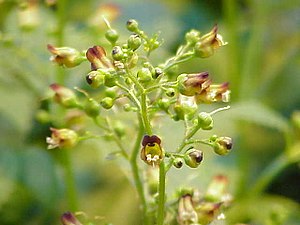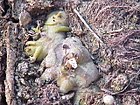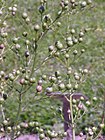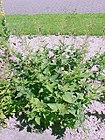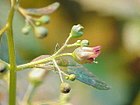Note: This is a project under development. The articles on this wiki are just being initiated and broadly incomplete. You can Help creating new pages.
Difference between revisions of "Scrophularia nodosa - Woodland figwort"
(→Parts Used) |
(→External Links) |
||
| Line 89: | Line 89: | ||
[[Category:Herbs]] | [[Category:Herbs]] | ||
| + | [[Category:Scrophulariaceae]] | ||
Revision as of 11:41, 27 May 2019
Woodland figwort is a perennial herbaceous plant found in temperate regions of the Northern hemisphere except western North America. It grows in moist and cultivated waste ground.
Contents
- 1 Uses
- 2 Parts Used
- 3 Chemical Composition
- 4 Common names
- 5 Properties
- 6 Habit
- 7 Identification
- 8 List of Ayurvedic medicine in which the herb is used
- 9 Where to get the saplings
- 10 Mode of Propagation
- 11 How to plant/cultivate
- 12 Commonly seen growing in areas
- 13 Photo Gallery
- 14 References
- 15 External Links
Uses
eczema , psoriasis , hemorrhoids, heart problems, liver problems, tuberculous, tumors, swelling, Sore throats
Parts Used
Chemical Composition
Iridoids, aucubin & catapol are purgative. Harpagoside is anti-inflammatory and positively inotropic (will increase myocardial contractions).[1]
Common names
| Language | Common name |
|---|---|
| Kannada | |
| Hindi | |
| Malayalam | |
| Tamil | |
| Telugu | |
| Marathi | NA |
| Gujarathi | NA |
| Punjabi | NA |
| Kashmiri | NA |
| Sanskrit | |
| English | Woodland figwort |
Properties
Reference: Dravya - Substance, Rasa - Taste, Guna - Qualities, Veerya - Potency, Vipaka - Post-digesion effect, Karma - Pharmacological activity, Prabhava - Therepeutics.
Dravya
Rasa
Tikta (Bitter), Kashaya (Astringent)
Guna
Laghu (Light), Ruksha (Dry), Tikshna (Sharp)
Veerya
Ushna (Hot)
Vipaka
Katu (Pungent)
Karma
Kapha, Vata
Prabhava
Habit
Identification
Leaf
| Kind | Shape | Feature |
|---|---|---|
| Simple | opposite | Short-stemmed ovate at base, lanceolate near the top, with toothed margins |
Flower
| Type | Size | Color and composition | Stamen | More information |
|---|---|---|---|---|
| Unisexual | 2-4cm long | Yellow | 5-20 | The flowers are in loose cymes in pyramidal or oblong panicles |
Fruit
| Type | Size | Mass | Appearance | Seeds | More information |
|---|---|---|---|---|---|
| General | 7–10 mm | clearly grooved lengthwise, Lowest hooked hairs aligned towards crown | many | {{{6}}} |
Other features
List of Ayurvedic medicine in which the herb is used
- Vishatinduka Taila as root juice extract
Where to get the saplings
Mode of Propagation
How to plant/cultivate
Damp ground in woods, hedgebanks, by streams etc. An occasional garden weed[3]
Commonly seen growing in areas
Temperate regions, Moist, Waste ground.
Photo Gallery
References
External Links
- Ayurvedic Herbs known to be helpful to treat eczema
- Ayurvedic Herbs known to be helpful to treat psoriasis
- Ayurvedic Herbs known to be helpful to treat hemorrhoids
- Ayurvedic Herbs known to be helpful to treat heart problems
- Ayurvedic Herbs known to be helpful to treat liver problems
- Ayurvedic Herbs known to be helpful to treat tuberculous
- Ayurvedic Herbs known to be helpful to treat tumors
- Ayurvedic Herbs known to be helpful to treat swelling
- Ayurvedic Herbs known to be helpful to treat Sore throats
- Herbs with Stem used in medicine
- Herbs with Leaves used in medicine
- Herbs with common name in English
- Habit - Small plant
- Index of Plants which can be propagated by Seeds
- Herbs that are commonly seen in the region of Temperate regions
- Herbs that are commonly seen in the region of Moist
- Herbs that are commonly seen in the region of Waste ground
- Herbs
- Scrophulariaceae
